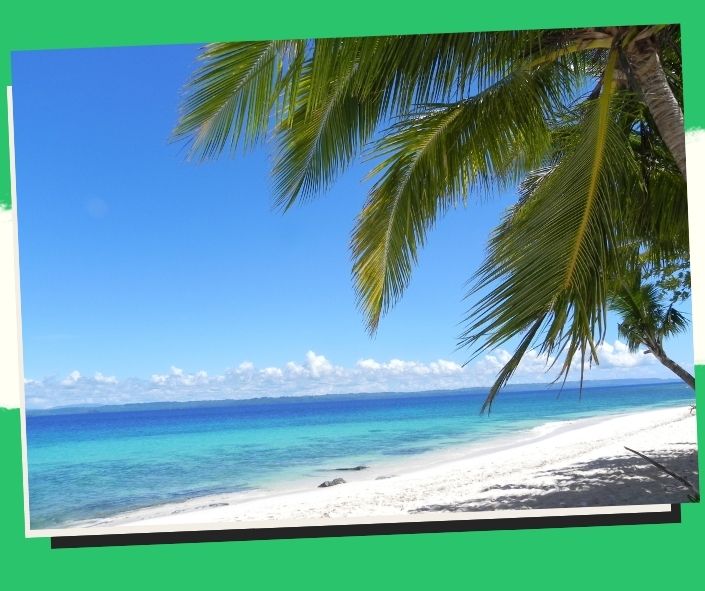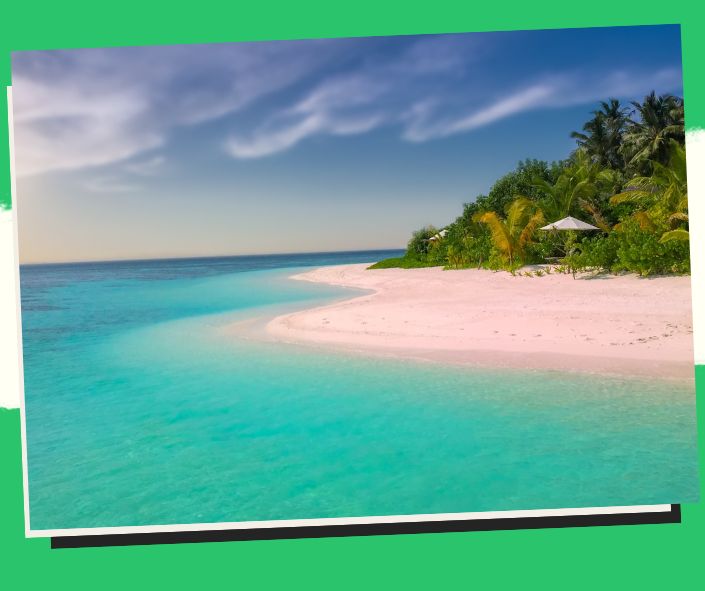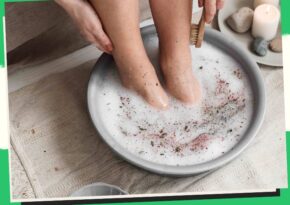
The Healing Power Within: Unveiling the Essence of Traditional Filipino Healing
Experience the transformative power of ancient traditions as we shine a light on the resurgence of interest in traditional Filipino healing beyond modern medicine.
Healing Traditions: A Guide to Exploring Traditional Filipino Healing Practices 🌱
In the Philippines, healing has been deeply ingrained in the culture for centuries, with traditional practices passed down through generations. These ancient healing techniques, rooted in indigenous wisdom and holistic approaches, continue to thrive alongside modern medicine. Join us on a journey as we delve into the rich tapestry of traditional Filipino healing practices and discover how they promote wellness and vitality.
Understanding Traditional Filipino Healing
Filipino healing practices are as diverse as the archipelago itself, drawing inspiration from the country’s cultural heritage, indigenous beliefs, and natural resources. From herbal medicine to spiritual rituals, these practices encompass a holistic approach to health that addresses the interconnectedness of the mind, body, and spirit.
1. Hilot: The Art of Filipino Massage 👐
Hilot is a traditional Filipino healing practice that involves massage, chiropractic manipulation, and herbal medicine. Practiced by manghihilot (healers), hilot aims to restore balance and harmony in the body by addressing energy blockages and imbalances.
Key Features:
- Massage Techniques: Hilot practitioners use a combination of massage strokes, stretching, and pressure points to alleviate tension, improve circulation, and promote relaxation.
- Herbal Medicine: Traditional hilot often incorporates the use of herbal oils, liniments, and poultices made from indigenous plants believed to have healing properties.
- Energetic Healing: Hilot is based on the belief that imbalances in the body’s energy (or “lamig”) can lead to illness. Manghihilot use intuitive touch to identify and release energy blockages, restoring flow and vitality.
2. Herbal Medicine: Nature’s Pharmacy 🌿
Herbal medicine has been a cornerstone of Filipino healing for millennia, with indigenous plants and herbs prized for their therapeutic properties. From common ailments to more serious conditions, traditional healers harness the power of nature to promote health and well-being.
Key Features:
- Plant-Based Remedies: Filipino herbal medicine encompasses a wide range of remedies, including teas, tinctures, poultices, and balms, made from locally sourced plants such as lagundi, guava leaves, and ginger.
- Holistic Approach: Herbal medicine addresses not only the physical symptoms of illness but also the underlying imbalances in the body. It is often used in conjunction with other healing modalities, such as massage and energy work.
- Cultural Significance: Many herbal remedies have been passed down through generations, with knowledge of their efficacy preserved within families and communities. These plants hold cultural significance and are revered for their healing properties.
3. Albularyo: The Healers of the Philippines 🌟
Albularyo, or traditional healers, play a vital role in Filipino society, serving as custodians of ancient healing knowledge and practices. These wise men and women possess a deep understanding of herbal medicine, spiritual healing, and indigenous rituals, offering their services to those in need.
Key Features:
- Spiritual Healing: Albularyo often incorporate spiritual elements into their healing sessions, such as prayers, rituals, and blessings, to address spiritual and emotional imbalances.
- Community Support: Albularyo are highly respected members of their communities, often serving as trusted advisors and mediators. They provide not only physical healing but also emotional support and guidance.
- Continuing Tradition: Despite modern advancements in healthcare, many Filipinos continue to seek the services of albularyo, recognizing the value of their holistic approach to wellness and their deep connection to Filipino culture and heritage.
Tips for Exploring Traditional Filipino Healing Practices
- Respect Cultural Sensitivities: Approach traditional healing practices with an open mind and a respectful attitude towards the cultural beliefs and traditions of the Filipino people.
- Seek Guidance from Experts: When exploring traditional healing practices, seek guidance from experienced practitioners who have a deep understanding of the techniques and their cultural significance.
- Embrace Holistic Wellness: Traditional Filipino healing emphasizes the interconnectedness of the mind, body, and spirit. Embrace a holistic approach to wellness that addresses all aspects of your being.
- Support Sustainable Practices: When purchasing herbal remedies or seeking the services of traditional healers, support sustainable practices that respect the environment and the communities that rely on these resources.
Benefits of Traditional Filipino Healing Practices
- Holistic Healing: Traditional Filipino healing practices offer holistic approaches that address the root causes of illness and imbalance, promoting overall health and well-being.
- Cultural Connection: Engaging in traditional healing practices allows individuals to connect with their cultural heritage and ancestral wisdom, fostering a sense of belonging and identity.
- Natural Remedies: Many Filipino healing practices utilize natural remedies such as herbs, oils, and massage techniques, minimizing reliance on synthetic medications and promoting natural healing.
- Personalized Treatment: Traditional healers often provide personalized treatment plans tailored to the individual needs and conditions of each client, ensuring effective and targeted healing.
- Emotional Healing: Traditional Filipino healing practices not only address physical ailments but also provide emotional support and healing, promoting mental well-being and resilience.
- Spiritual Growth: Through rituals, prayers, and ceremonies, traditional healing practices facilitate spiritual growth and connection, helping individuals find meaning and purpose in their lives.
- Community Support: Traditional healers are often deeply integrated into their communities, providing not only healing services but also social support and guidance to individuals and families in need.
- Affordability: Traditional healing practices are often more accessible and affordable than modern medical treatments, making them a viable option for individuals with limited resources.
- Cultural Preservation: By engaging with traditional healing practices, individuals contribute to the preservation and revitalization of Filipino culture and heritage for future generations.
- Empowerment: Traditional healing practices empower individuals to take an active role in their own health and well-being, fostering a sense of agency and self-empowerment.
Case Studies
- Hilot Massage: A traditional Filipino massage technique, Hilot involves the use of hands-on healing, herbal remedies, and energy balancing to address physical ailments and promote relaxation.
- Herbal Medicine: Herbalism has been a cornerstone of Filipino healing for centuries, with various plants and herbs used to treat a wide range of health conditions, from digestive issues to respiratory ailments.
- Babaylan Healing: Babaylan are traditional healers in Filipino indigenous cultures who perform rituals, ceremonies, and spiritual healing to restore balance and harmony within individuals and communities.
- Arbularyo Practices: Arbularyos are folk healers who specialize in herbal medicine, spiritual healing, and divination, providing a wide range of services to address physical, emotional, and spiritual ailments.
- Albularyo Massage: Albularyos often incorporate massage techniques into their healing practices, using therapeutic touch and energy work to promote relaxation, pain relief, and overall well-being.
- Agimat and Anting-anting: Agimat and anting-anting are amulets or talismans believed to possess protective and healing powers, often used by traditional healers to ward off negative energies and promote health and prosperity.
- Dagdagay: Dagdagay is a traditional Filipino foot massage technique that utilizes wooden sticks to stimulate pressure points and promote circulation, relieving pain and tension in the feet and legs.
- Limpia: Limpia is a cleansing ritual performed by traditional healers to remove negative energy and spiritual blockages, restoring balance and harmony within the individual.
- Bentusa: Bentusa, or fire cupping, is a traditional healing technique that involves placing heated glass cups on the skin to create suction, promoting blood flow and relieving pain and inflammation.
- Pamahiin: Pamahiin refers to traditional Filipino superstitions and beliefs related to health and wellness, often influencing healing practices and treatment decisions in local communities.
Key Takeaways
- Rich Cultural Heritage: Traditional Filipino healing practices are deeply rooted in the country’s cultural heritage and indigenous wisdom, reflecting centuries of knowledge and experience.
- Holistic Approach: Traditional healing practices address the physical, emotional, and spiritual aspects of health and wellness, offering holistic approaches to healing and well-being.
- Complement to Modern Medicine: Traditional healing practices can complement modern medical treatments, providing alternative therapies and holistic approaches to health and wellness.
- Community Integration: Traditional healers are often valued members of their communities, providing not only healing services but also social support, guidance, and cultural preservation.
- Natural Remedies: Many traditional healing practices utilize natural remedies such as herbs, oils, and massage techniques, promoting natural healing and minimizing reliance on synthetic medications.
- Personalized Treatment: Traditional healers provide personalized treatment plans tailored to the individual needs and conditions of each client, ensuring effective and targeted healing.
- Spiritual Connection: Traditional healing practices facilitate spiritual growth and connection, helping individuals find meaning, purpose, and balance in their lives.
- Empowerment: Traditional healing practices empower individuals to take an active role in their own health and well-being, fostering a sense of agency and self-empowerment.
- Cultural Preservation: By engaging with traditional healing practices, individuals contribute to the preservation and revitalization of Filipino culture and heritage for future generations.
- Global Relevance: Traditional Filipino healing practices are gaining recognition and popularity worldwide, as people seek alternative and holistic approaches to health and wellness.
FAQs (Frequently Asked Questions)
Q1: Are traditional Filipino healing practices effective?
A1: Many people find traditional Filipino healing practices to be effective in addressing a wide range of health conditions and promoting overall well-being.
Q2: How do I find a traditional healer in the Philippines?
A2: Traditional healers can often be found in local communities or through word of mouth recommendations. It’s essential to research and vet practitioners before seeking their services.
Q3: Are traditional Filipino healing practices safe?
A3: While traditional healing practices are generally safe, it’s essential to consult with a qualified practitioner and disclose any medical conditions or concerns before undergoing treatment.
Q4: Can traditional healing practices be combined with modern medicine?
A4: Yes, traditional healing practices can complement modern medical treatments, providing alternative therapies and holistic approaches to health and wellness.
Q5: How much do traditional healing services cost?
A5: Prices for traditional healing services vary depending on the practitioner, location, and type of treatment. It’s essential to inquire about costs before undergoing treatment.
Q6: Are traditional Filipino healing practices recognized by the government?
A6: While traditional healing practices are not officially regulated by the government, they are an integral part of Filipino culture and heritage, with many practitioners operating within local communities.
Q7: How long does it take to see results from traditional healing practices?
A7: The time it takes to see results from traditional healing practices varies depending on the individual, the type of treatment, and the severity of the condition being addressed.
Q8: Can traditional healing practices be performed remotely?
A8: Some traditional healing practices, such as spiritual healing and divination, can be performed remotely, while others, such as massage and herbal medicine, require in-person interaction.
Q9: What should I expect during a traditional healing session?
A9: Traditional healing sessions typically involve a consultation with the practitioner, followed by a treatment plan tailored to the individual needs and conditions of the client.
Q10: How can I learn more about traditional Filipino healing practices?
A10: Researching online, reading books and articles, attending workshops and seminars, and consulting with local practitioners are all excellent ways to learn more about traditional Filipino healing practices.
As you journey into the world of traditional Filipino healing practices, may you be inspired by the wisdom of the past, empowered by the healing of the present, and enriched by the cultural heritage of the Philippines. Embrace the holistic approach to health and wellness offered by these ancient modalities, and may your path be illuminated by the light of healing and transformation.
Conclusion
Traditional Filipino healing practices offer a unique glimpse into the rich tapestry of Filipino culture and heritage. By exploring techniques such as hilot massage, herbal medicine, and spiritual healing, you can tap into centuries-old wisdom and embrace a holistic approach to wellness. Whether you seek physical healing, emotional support, or spiritual guidance, traditional Filipino healing practices offer a pathway to health, harmony, and vitality.
Key Phrases
- Traditional Filipino Healing
- Healing Practices in the Philippines
- Ancient Healing Techniques
- Filipino Cultural Wellness
- Spiritual Healing Rituals
- Indigenous Healing Wisdom
- Holistic Wellness Traditions
- Resurgence of Traditional Healing
- Herbal Remedies in Filipino Healing
- Mind-Body-Spirit Connection
Best Hashtags
- #FilipinoHealing
- #TraditionalHealingPH
- #HealingPractices
- #FilipinoWellness
- #SpiritualHealing
- #IndigenousWisdom
- #HolisticWellness
- #ResurgenceOfHealing
- #HerbalRemedies
- #MindBodySpirit
DisclaimerThe information is for educational purposes only and subject to change, and it is highly recommended to consult local authorities for the latest and most accurate updates. We do not constitute endorsement of any specific technologies or methodologies or endorse of any specific products or services.📩 Need to get in touch?Feel free to Email Us for comments, suggestions, reviews, or anything else. |











Comments (0)